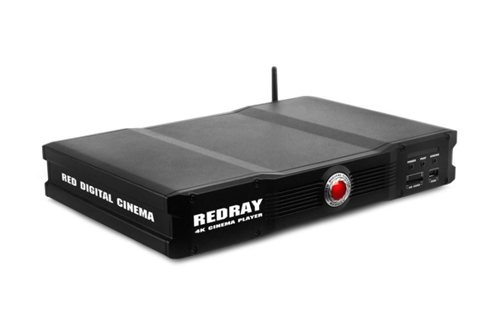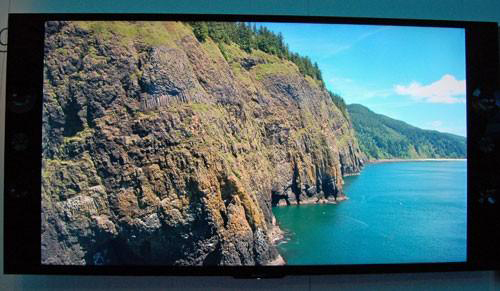Next to the pretty girls, the 4K Ultra High definition (UHD) television had the guys salivating at CES, but is UHD a little too much just now? High Definition (HDTV) televisions barely have momentum going and the industry wants us to change our viewing again. Will UHD be the limit or just another step toward an even higher resolution? In other words, how high is high (8K)?
Ultra high definition is also known as Ultra HD, UHD, and UHDTV. UHD is an exceptionally high video resolution that is presently being used in some theatrical movie releases. Not all movie theaters can handle this resolution, yet the manufacturers think that you should have this resolution in your home.
UHD is basically digital cinema, which refers to the use of digital technology to photograph, distribute and project movies, as opposed to the historical use of film. Using the Internet, satellite or optical disks (DVD & Blu-ray), a movie can be distributed to theaters. The digital movies are then projected using a commercial digital projector, such as the Christie Cinema projector instead of a film projector.
Digital cinema is distinct from HDTV and is not dependent on using High Definition video standards, aspect ratios, or frame rates. In digital cinema, resolutions are represented by the horizontal pixel count, usually 2K (2048 × 1080 or 2.2 megapixels) or 4K (4096 × 2160 or 8.8 megapixels).
The Digital Cinema Initiatives consortium established a standard resolution of 4096 × 2160 (8.8 megapixels, aspect ratio 256:135) for 4K film projection. The DCI 4K standard has twice the horizontal and vertical resolution of DCI 2K, with four times as many pixels overall. In order to provide a transition to all digital in the future, it is important there be one digital distribution and exhibition format. That format is the DCI specification. Digital cinema will increasingly become the standard and will change the way movies are made,
To obtain 4K resolution, movies need to be shot with a 4K camera, such as the Sony F65 4K camera. The sensor is actually 8k, but the video it records is 4K derived from that sensor (20 megapixels in DSLR terms). The F65 is a professional camera, which will replace 35mm film cameras. There are pros and cons for both systems, but the industry is moving toward digital, with some movie producers believing that film has a better resolution than digital photography.

Other professional camera manufacturers include the Blackmagic Cinema Camera, Red ONE, Arriflex, Panavision, Silicon Imaging, Thomson, Vision Research, Weisscam, GS Vitec, and the Fusion Camera System.
Even the finest film presentation wears down after a few weeks, but with digital cinema the last screening is as pristine as the first. DCI’s new universal standard will enable audiences to see digitally rendered films with the same consistency of color, detail, and resolution the world over.
Since many movie theaters still have 2K digital projectors, 4K movies can be played on 2K projection systems with no modifications. Through the use of JPEG 2000 image compression technology, a 2K projection system will extract a 2K image from a 4K digital movie.
Once the image is distributed to a movie theater, a 4K projector will be needed if the projected image stays true to the original image. Some of the manufacturers of movie theater projectors are Barco, Christie, IMAX, NEC, Sony and Texas Instruments.
Christie is the first projector manufacturer to offer digital cinema solutions based on 4K Series 2 DLP® technology from Texas Instruments. The resolution is 4096 x 2160 pixels with 34,000 lumens.
4K UHD is also available for the consumer market. For the home photographer, consumer manufacturers of UHD camcorders are Cannon, JVC, and Sony. The JVC GY-HMQ10 is a handheld 4K camcorder, which captures, records, and plays video images at four times the resolution of high definition television. JVC’s exclusive Falconbrid LSI processing takes raw image data from the camera’s CMOS device and dematrixes it in real time. Unlike many high end 4K cameras, the GY-HMQ10 is able to output 4K images to a monitor or projection system in real time with virtually no latency. This capability opens up applications in cinematography, medical microscopy, and specialized observation, such as surveillance.
Once the images are captured by a UHD camera, a 4K projector or TV will be needed to view the images. Using the new SXRD 4K panel combined with Sony’s Iris3 technology, the Sony VPL-VW1000ES projector produces 2,000 ANSI lumens of brightness and a dynamic contrast ratio of 1,000,000:1. It boasts a 2.1 motorized zoom and can produce images from 60 to 300 inches diagonally, with its 330W bulb expected to last from 2,000 to 2,500 hours. Connectivity options include two HDMI connectors.
With native 4K content just as scarce as devices able to display 4K video, the VPL-VW1000ES features Sony’s “Reality Creation” upscaler that can take SD or HD, as well as 2D or 3D content and upscale it to 4K resolution.
It is important to realize that no video source material exists for the consumer market that is actually 4K resolution, either from a disc or TV transmission. The TV, video projector, or external video processor, has to upscale the incoming 3D or 2D signal to the desired 4K resolution. Broadcast television in the United States is limited to 1080i or 720p, while the current Blu-ray specification tops out at 1080p or 1080i. 4K UHD equipment is appearing first, driving the need for 4K content.
Blu-ray discs have the physical capacity to accommodate 4K resolution material, but additional disc layers would have be added to provide enough space for a full length movie. Current Blu-ray disc players most likely would not be able to play back native 4K content, but at some point, 4K will need to be added to the Blu-ray specification, which will provide the content that the average consumer wants.
JVC 4K UHD is shot with four SD cards. Each of the SD cards records a high bit rate quadrant of the total image. These images are merged together afterward by proprietary software into a single 4K video file. The process begins as one consistent 4K image, but is divided up into four data streams for bandwidth purposes and recorded to four separate SD cards. The JVC system uses common SD cards, which requires that these four data streams be recombined, while the RED system requires the use of solid state hard drives,
RED, the cutting-edge company that manufactures professional high-resolution cameras has come out with an affordable 4K media player, the REDRAY, scheduled for delivery this year.

The REDRAY Player from RED is the first plug-and-play-friendly device capable of providing 4K content to 4K displays. It has the ability to upscale HD files to UHD resolution. It also supports 3D playback at high frame rates (48-60fps), which is more than twice that of traditional HD 3D devices.
Television manufacturers are looking for that special feature that will get customers with existing LCD TVs to upgrade, and one of those features is 4K resolution. 4K originated in movie theaters as stated previously. Most 4K TV screens, however, conform to the Quad Full High Definition (QFHD) standard, which doubles the horizontal and vertical pixels of a 1080p screen to make a 3840 x 2160 display. To obtain an advantage out of a 4K TV, you either need to have a very large screen, say 50 or 60,” or sit close by the TV. This might just not appeal to the average consumer.
LG, Panasonic, Samsung, Sony, Toshiba and Westinghouse manufacture a 4K UHD television set, but initially, these sets will sell for over $10,000, which is out of the price range of most consumers. Up-converting from a standard consumer Blu-ray image to a 4K television, the picture quality is every bit as good as the native 4K content.

4K UHD television sets might be the future, but manufacturers are front-loading their current sets with smart TV options, such as the Internet, home media and social integration. These added features might just be the draw, rather than just increasing the resolution.
We bought VHS and then stuck it the closet when DVD was released. The DVD player joined the VHS player when Blu-ray came out, now we are being asked to dump our Blu-ray as UHD arrives and newer technology after that. Movie playback is changing every few years like the computer technology did, so don’t fall in love with any standard, as it won’t be here very long.
There may come a time when 4K might become the default standard for our video viewing, but before that happens there will need to be a lot of infrastructure changes. The DCI standard must be used throughout the entire production and delivery chain, and finally the consumer must accept this new resolution.
UHD doesn’t make your television obsolete, as you will still be able to use it, as the current HDTV infrastructure will not be abandoned anytime soon. When UHD is implemented on a broad basis, it should be in addition to, but not as a replacement of current technology.
For more information:
- 4K resolution: more than meets the eye
- http://pro.sony.com/bbsccms/static/files/mkt/digitalcinema/Why_4K_WP_Final.pdf
- https://www.prestocentre.org/…/DFT-SCANITY-white-paper.pdf
- http://tech.ebu.ch/docs/techreports/tr014.pdf
- http://www.christiedigital.co.uk/TechPapers/digital-cinema-projection-choosing-the-right-technology-english.pdf
About Len
Len started in the audio visual industry in 1975 and has contributed articles to several publications. He also writes opinion editorials for a local newspaper. He is now retired.
This article contains statements of personal opinion and comments made in good faith in the interest of the public. You should confirm all statements with the manufacturer to verify the correctness of the statements.
